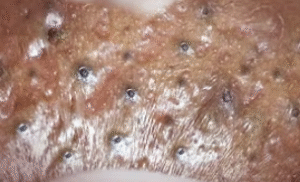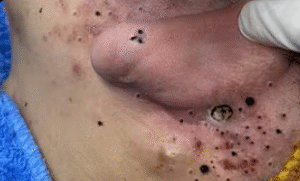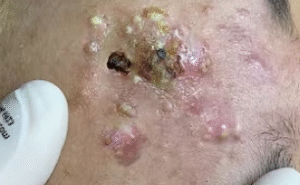The Best Video 006
Both blackheads and whiteheads are caused by a combination of factors, including excess sebum production, dead skin cell buildup, and bacterial activity.
Sebum is an oily substance produced by the sebaceous glands in the skin. It helps keep the skin moisturized and protected. However, when there is an overproduction of sebum, it can mix with dead skin cells and bacteria, leading to clogged pores.
Several factors can contribute to excess sebum production, including hormonal changes, genetics, and certain medications. Hormonal changes, such as those that occur during puberty or menstruation, can increase sebum production. Genetics also play a role, as some people naturally produce more sebum than others. Certain medications, such as corticosteroids or androgens, can also stimulate sebum production.
Bacteria, particularly Propionibacterium acnes (P. acnes), also play a role in the formation of blackheads and whiteheads. P. acnes is a type of bacteria that naturally resides on the skin. However, when there is an overgrowth of P. acnes, it can lead to inflammation and acne breakouts.
Cleansing 101: The Importance of a Proper Skincare Routine
Proper cleansing is essential for preventing and treating blackheads and whiteheads. Cleansing helps remove excess oil, dead skin cells, and bacteria from the skin’s surface, preventing them from clogging the pores.
When choosing a cleanser for acne-prone skin, look for one that is specifically formulated for oily or acne-prone skin. These cleansers often contain ingredients like salicylic acid or benzoyl peroxide, which help unclog pores and reduce inflammation.
When cleansing your face, it’s important to use gentle, circular motions to avoid irritating the skin. Avoid scrubbing too harshly or using abrasive exfoliants, as this can cause further irritation and inflammation.
It’s also important to cleanse your face twice a day – once in the morning and once at night – to remove any dirt or impurities that have accumulated throughout the day. Be sure to follow up with a moisturizer to keep your skin hydrated.
Exfoliation: The Key to Banishing Blackheads and Whiteheads
Exfoliation is an important step in any skincare routine, especially for those dealing with blackheads and whiteheads. Exfoliation helps remove dead skin cells and unclog pores, preventing the buildup of sebum and bacteria.
There are two main types of exfoliants: physical exfoliants and chemical exfoliants. Physical exfoliants, such as scrubs or brushes, work by physically removing dead skin cells from the surface of the skin. Chemical exfoliants, on the other hand, use ingredients like alpha hydroxy acids (AHAs) or beta hydroxy acids (BHAs) to dissolve the bonds between dead skin cells, allowing them to be easily sloughed off.
When choosing an exfoliant, it’s important to consider your skin type and sensitivity. If you have sensitive skin, opt for a gentle exfoliant and limit exfoliation to once or twice a week. If you have oily or acne-prone skin, a BHA exfoliant containing salicylic acid can be particularly effective in unclogging pores.
When exfoliating, be sure to follow the instructions on the product and avoid over-exfoliating, as this can lead to irritation and dryness. After exfoliating, always follow up with a moisturizer to keep your skin hydrated.




